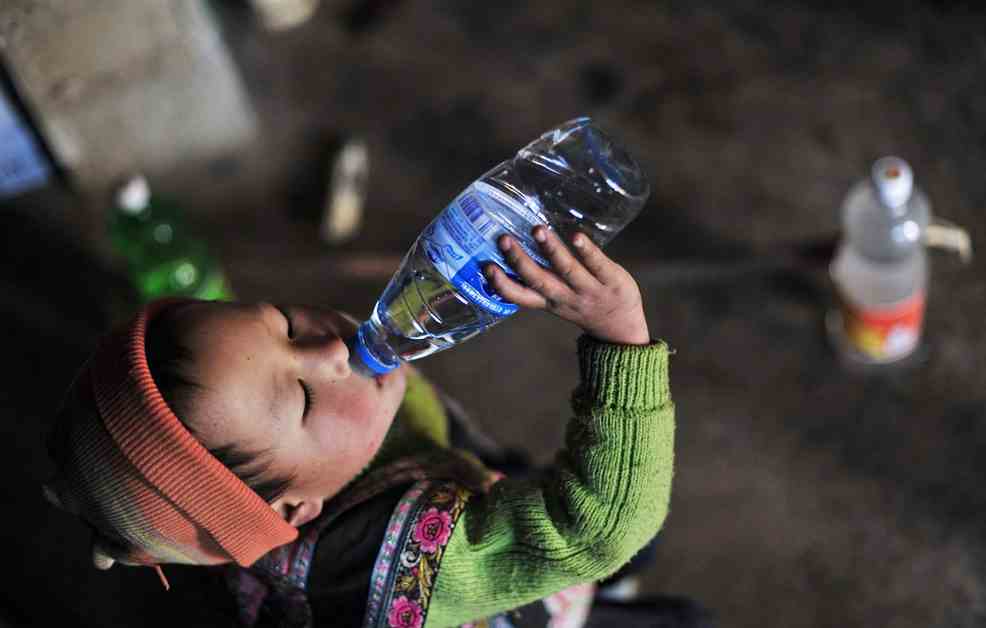Is Humanity Turning into Plastic?
Particles of plastic found in blood, organs, and even testicles. It seems like humans are slowly transforming into a different material. While plastic growths may not (yet?) start sprouting on the body, several studies published in recent months raise questions about our consumption habits. Bottled water is overflowing with microplastics, containing up to 100 times more tiny particles than previously estimated, according to a study published in January in the Proceedings of the National Academy of Sciences (PNAS) journal.
The results are staggering. Scientists have counted an average of 240,000 detectable plastic fragments per liter of water, with 90% being nanoplastics and the rest being microplastics. The most commonly found type was nylon – likely coming from plastic filters used to purify water – followed by polyethylene terephthalate (PET), used in bottles. Researchers also plan to test tap water, which may contain them in lesser amounts. In essence, with every bottle of water consumed, over 200,000 plastic fragments are ingested.
«Once consumed, does plastic enter the body? A few years ago, there were suspicions,» explained Xavier Coumoul, a toxicologist and director of the Inserm Metatox team. A study published in March 2022 in the scientific journal Environment International confirms this hypothesis. After analyzing the blood of 22 anonymous healthy adult donors, microplastics were found in measurable concentrations in seventeen of them, which is 77% of the sample.
A recent study published last May by Oxford University Press reveals «the presence of microplastics in all canine and human testicles [tested], with significant interindividual variability.» If they are found in blood, organs, and testicles, how far can this go?
The body cannot metabolize plastic, unlike other molecules like certain pesticides. «When you absorb glyphosate, it enters the blood and is eliminated through urine,» analyzed the toxicology specialist. «You are able to transform it in the body and eliminate it in urine fairly easily. Even though we are talking about ‘microplastics,’ they can be 50 to 100 times larger than a glyphosate molecule. The size scale plays a big role in elimination. Once it has entered the body, it is more difficult to remove it.»
There are other pollutants that the body cannot metabolize, such as dioxins. These are persistent organic pollutants in the environment, often unintentionally produced during a combustion process, often linked to older generation incinerators. And they accumulate in the food chain. «Fortunately, there are fewer and fewer of them. If you measure the dioxin concentration in adipose tissue, you can predict a person’s age without fail. There is a linear relationship between a person’s age and the concentration of dioxins in their tissues.»
For now, it is impossible to know whether the human body is able to transform some of the plastic it ingests or not. There is not enough research on the subject. But with over 200,000 plastic fragments ingested with each bottle, that’s a lot of plastic in the body.
«According to a correlation study, the more microplastics there are, the greater the risk of developing a cardiovascular disease,» emphasized Xavier Coumoul. «But these are not causation studies, only correlation studies. We observe phenomenon A, we find it correlated to phenomenon B.» Another health risk considered is an inflammatory reaction. When you cut yourself, immune cells come into play, and the skin becomes red around the wound.
«Inflammation plays a role in the immediate protection of the wound and in its healing, but if inflammation becomes chronic, it becomes harmful. Co-inflammatory molecules are present in an environment when they do not need to be there,» explained Xavier Coumoul.
There is a high likelihood that a microplastic in a cellular environment triggers an inflammatory reaction. «Most cancers are inflammatory pathologies,» reminded the scientist. «If we assume that we are contaminated by microplastics and that these microplastics trigger low-grade inflammatory reactions [without symptoms], there is a risk that these inflammations will one day be linked to an increase in certain inflammatory pathologies, such as cancer.»
The current studies sound the alarm on health and fertility risks. At the moment, they form a story that raises questions. However, proving the real consequences of these plastic particles on our health is still necessary. In the meantime, we can always limit our exposure to plastic.




















